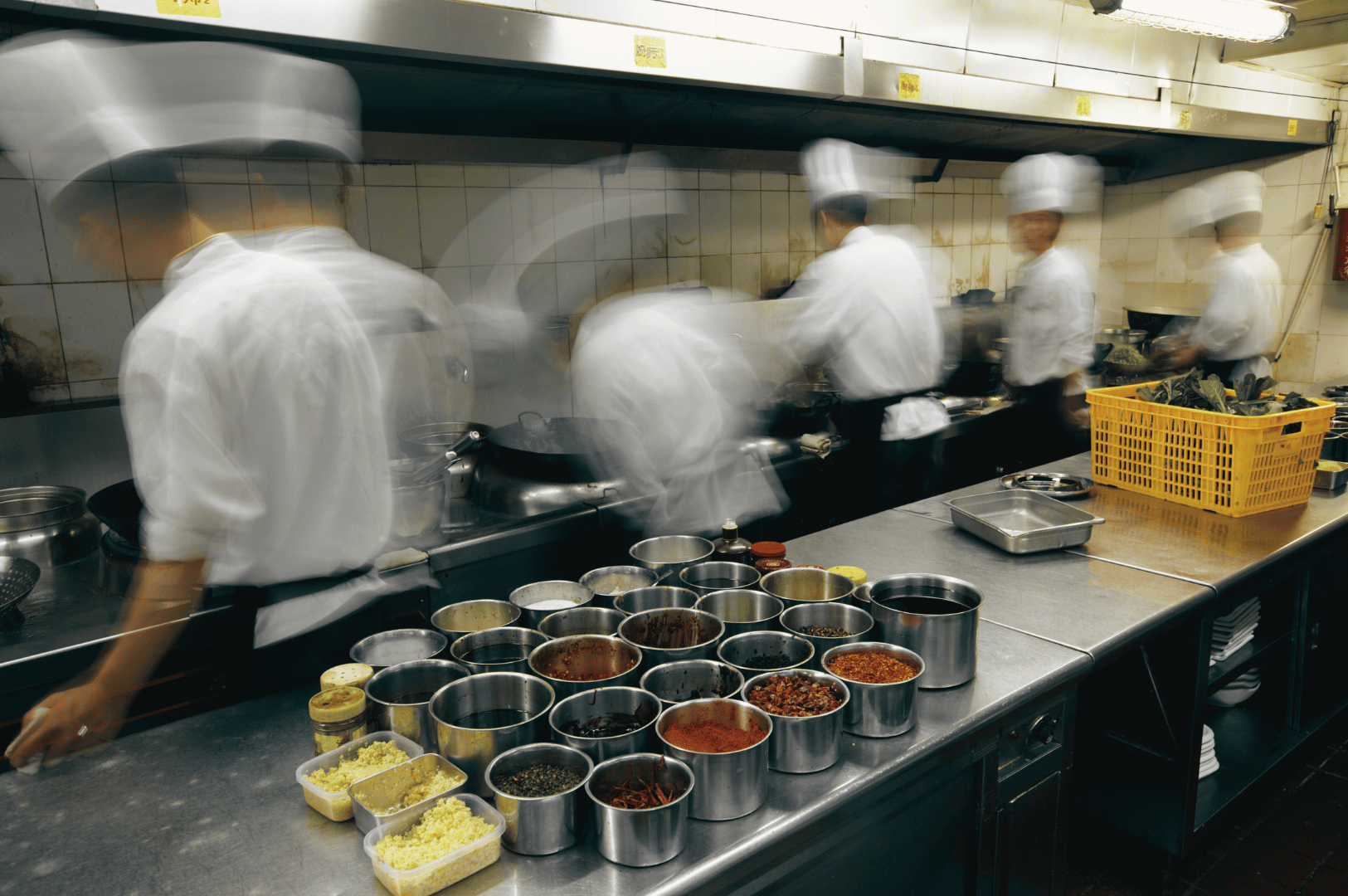In Singapore, the relentless heat and ever-present humidity present unique challenges for restaurants. From wok-fried delicacies to endless prepping, a bustling kitchen quickly fills with significant heat, moisture, and lingering smells.
Without the right commercial kitchen ventilation Singapore solution, these factors threaten not only the working environment but also food quality, equipment longevity, customer satisfaction, and regulatory compliance.
This guide outlines what you need to consider to ensure your kitchen ventilation system thrives in Singapore’s tropical environment.
Singapore’s Climate Challenges: High Humidity, Heat, and Monsoon Rains

Ventilation requirements for Singapore restaurant ventilation are shaped by the island’s distinctive climate.
Monsoon Seasons: Twice a year, monsoons bring torrential rain and fluctuating wind directions, which can introduce more moisture and complicate airflow as well as exhaust function. Without proper design, moisture can enter ductwork, and wind can reduce kitchen exhaust system effectiveness.
High Humidity Levels: Singapore experiences average relative humidity levels between 70% and 90%, with the human body feeling the effects year-round. This high moisture content leads to condensation, increased mould growth, slippery floors, and discomfort for staff.
Significant Heat: Ambient temperatures frequently hover between 27–32°C. Cooking processes rapidly raise the air temperature and humidity further, requiring any exhaust system to remove excess heat efficiently.
Regulatory Requirements: Ensuring NEA Compliance and Fire Safety
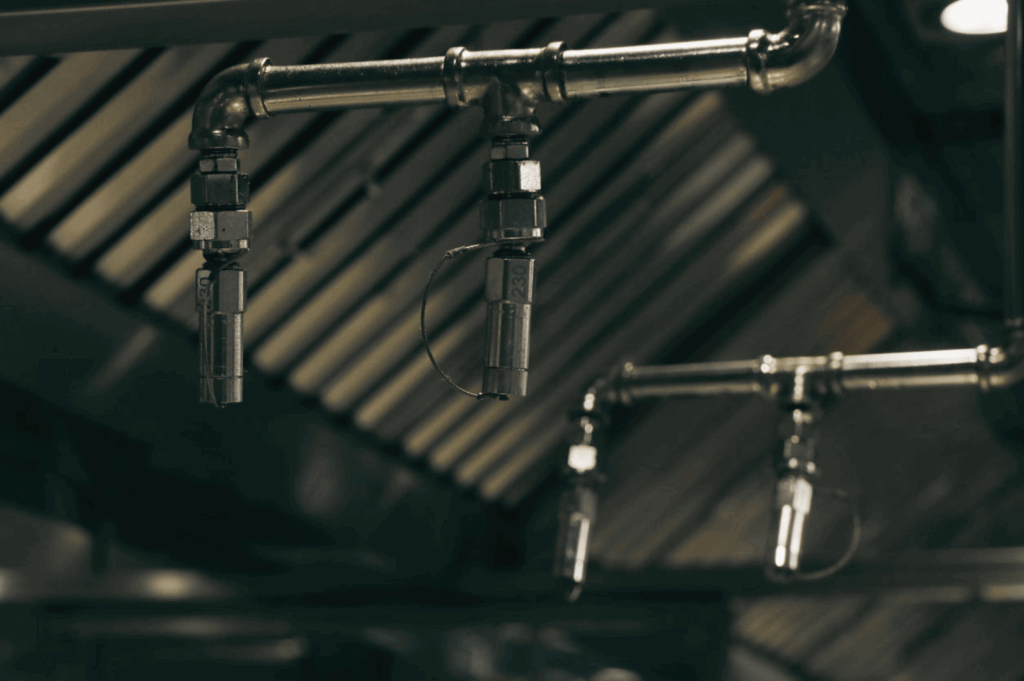
Proper ventilation in commercial kitchens must align with strict local guidelines for both safety and air quality. Singapore’s National Environment Agency (NEA) and Civil Defence Force (SCDF) set out the compliance standards for any new or existing restaurant.
Regular cleaning and maintenance to prevent grease accumulation is mandatory, supporting both fire prevention and maintaining optimum ventilation performance.
- NEA Compliance:
- NEA regulations mandate that commercial kitchen ventilation systems clear kitchen air of odors, smoke, grease, and particulate matter before discharge.
- Humidity control systems and filtration devices, such as electrostatic precipitators or carbon filters, are often required to ensure high indoor air quality—especially for establishments in mixed-use or residential zones.
- NEA Compliance:
- Commercial Kitchen Fire Safety:
- SCDF requires exhaust hoods and ductwork to be constructed from non-combustible materials, featuring fire suppression systems directly integrated with kitchen equipment.
- Regular cleaning and maintenance to prevent grease accumulation is mandatory, supporting both fire prevention and maintaining optimum ventilation performance.
Types of Ventilation Systems: Building a Resilient and Flexible Solution
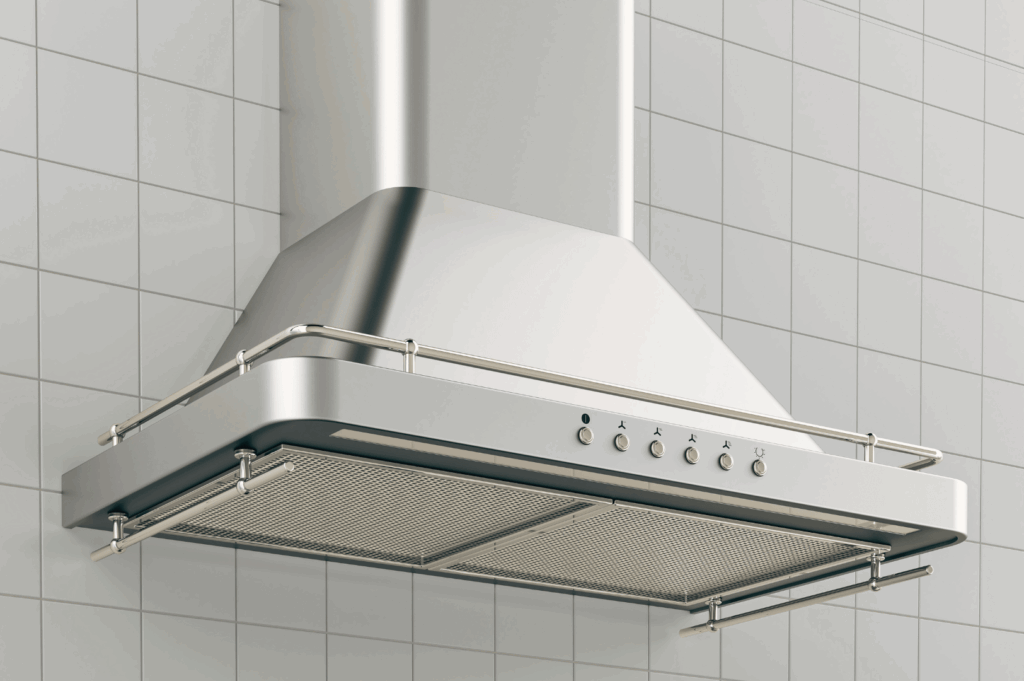
Effective commercial kitchen ventilation Singapore strategies rely on a balanced combination of systems that address each aspect of air and humidity management:
- Exhaust Hoods & Exhaust Systems: Placed directly above cooking equipment, exhaust hoods actively extract heat, smoke, grease, and excess moisture produced during the cooking process. Type I hoods are suited for operations with frying and grilling, while Type II are ideal for low-grease heat sources such as ovens and dishwashers.
- Make Up Air (MUA) Units: Every cubic meter of air exhausted must be replaced. MUA systems deliver direct air into the kitchen space, ensuring a balanced pressure and preventing unwanted backdraughts or temperature imbalances, particularly between the kitchen and dining areas.
- Energy Recovery Ventilators (ERVs): To reduce energy consumption and cooling costs, ERVs precondition incoming air by transferring heat and moisture from outgoing exhaust to incoming air. This support is significant in a tropical climate and enables conditioning of air before it enters the HVAC systems.
Proper airflow balance within HVAC systems is essential to prevent additional heating costs and to ensure effective temperature regulation in the kitchen space.
- Demand Controlled Kitchen Ventilation (DCKV Systems): Using sensors, DCKV systems automatically adjust fan speed based on cooking load, heat generated, and indoor air quality. This technology is foundational for reducing energy consumption, as fans work harder only when needed, rather than running at full speed continuously.
Ventilation System Components: Understanding the Building Blocks
A robust ventilation system in commercial kitchens is made up of several essential components, each contributing to energy efficiency and superior indoor air quality.
Makeup air units play a critical role by introducing fresh air to replace what is exhausted, ensuring proper ventilation and maintaining balanced air pressure. High-quality ductwork, designed for minimal air leakage, further enhances system efficiency and ensures that air quality is consistently maintained throughout the kitchen.
Maintaining Air Quality: Safeguarding the Kitchen Environment
Air quality is a cornerstone of a safe and productive commercial kitchen. An effective ventilation system is designed to remove excess moisture and reduce humidity levels, helping to prevent mould growth and maintain a healthy environment.
Incorporating energy efficient solutions such as demand controlled ventilation and desiccant dehumidifiers allows kitchen operators to remove excess moisture while minimizing energy consumption. These systems automatically adjust to the kitchen’s needs, ensuring that air quality remains high even during peak cooking times. Regular maintenance of the ventilation system, including cleaning and calibration of dehumidifiers, is essential to keep the system running efficiently and to prevent the buildup of contaminants.
Providing Fresh Air: Ensuring Comfort and Compliance
Energy efficient components, such as variable-speed fans and high-efficiency motors, help reduce energy consumption while maintaining proper ventilation. By efficiently removing excess moisture and heat, these systems can also lower cooling costs, making the kitchen environment more cost effective to operate.
Ultimately, providing fresh air through an efficient ventilation system is key to maintaining a comfortable, compliant, and energy efficient kitchen environment.
Energy Efficiency Considerations: Optimizing Power and Cost
Singapore’s high energy costs, coupled with the demand for conditioned air in commercial kitchens, make energy efficiency an operational and financial priority.
Energy Efficient Solutions for Singapore Restaurant Ventilation:
- Demand-Controlled Ventilation (DCV): Smart DCV systems continuously monitor temperature, humidity, and air quality, adjusting the operation of fans and hoods. This efficient, automated adjustment means your ventilation only works as hard as necessary, resulting in energy savings of 40-60% compared to traditional constant-volume systems.
- High-Efficiency Fans and Motors: Electronically commutated (EC) motors improve efficiency at varying speeds, directly impacting operating costs.
- ERVs and Energy Recovery Components: Integrated ERVs allow businesses to save significant cooling power by transferring heat and moisture between exhaust and supply air streams.
- Energy Saving Components: Variable frequency drives, programmable sensors, and regular filter maintenance all contribute to reducing energy consumption.
- Insulation and Air Leakage Prevention: Properly sealed ductwork minimizes energy losses in conditioned air, supporting both energy efficiency and safety.
With these strategies, business owners reduce both carbon footprint and monthly energy bills, all while creating an optimal environment for staff and customers.
Maintenance Best Practices: Keeping Your Ventilation in Top Shape
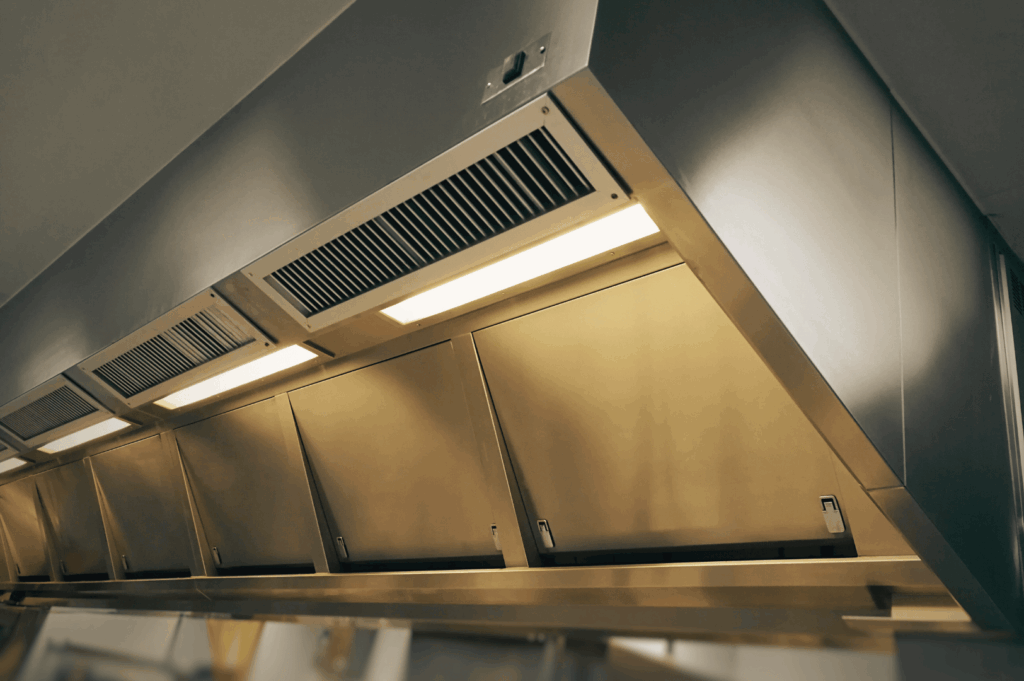
Frequent Cleaning: In a humid, grease-heavy environment, daily cleaning of grease filters and regular inspection of fan blades is crucial for maintaining airflow and preventing operating costs from creeping up.
Quarterly Professional Service: Engage a qualified contractor like YEK Engineering for comprehensive “hood-to-roof” service. This should include cleaning ductwork, calibrating fans, checking dehumidification performance, and verifying all safety components.
Fire Suppression Systems: Annually inspect and test fire suppression mechanisms to remain compliant and ready for emergencies.
Constant Monitoring: Smart sensors integrated with modern ventilation systems can provide immediate alerts for wear, dropped airflow, or signs of corrosion and mould growth.
System Fine Tuning: Adjust humidity, airflow, and fan speed settings as new kitchen equipment or menu offerings are introduced to ensure continued efficiency.
Cost Analysis and ROI: Balancing Investment and Value
A top-performing commercial kitchen ventilation Singapore system is a substantial investment, but the long-term benefits justify the cost.
- Initial Investment: Depending on kitchen space, required capacity, and system complexity, installation may cost S$15,000 to S$120,000+. Energy efficient features, humidity control, and advanced automation will impact upfront costs.
- Operating and Maintenance Costs: Monthly costs are affected by system efficiency, frequency of cleaning, and staff training. A well-configured ventilation system with energy saving components can deliver substantial reductions in energy consumption and maintenance bills.
- ROI Considerations: Efficient designs that reduce cooling costs, protect equipment, and support higher food quality pay for themselves within just a few years. Long-term gains include improved customer satisfaction, reduced downtime for repairs, and compliance with NEA and fire safety codes.
- Scaling for Business Size: Whether you run a small house café or a large commercial kitchen, right-sizing the system to your specific needs is essential for balancing cost effectiveness and performance.
Practical Steps for Restaurant Success
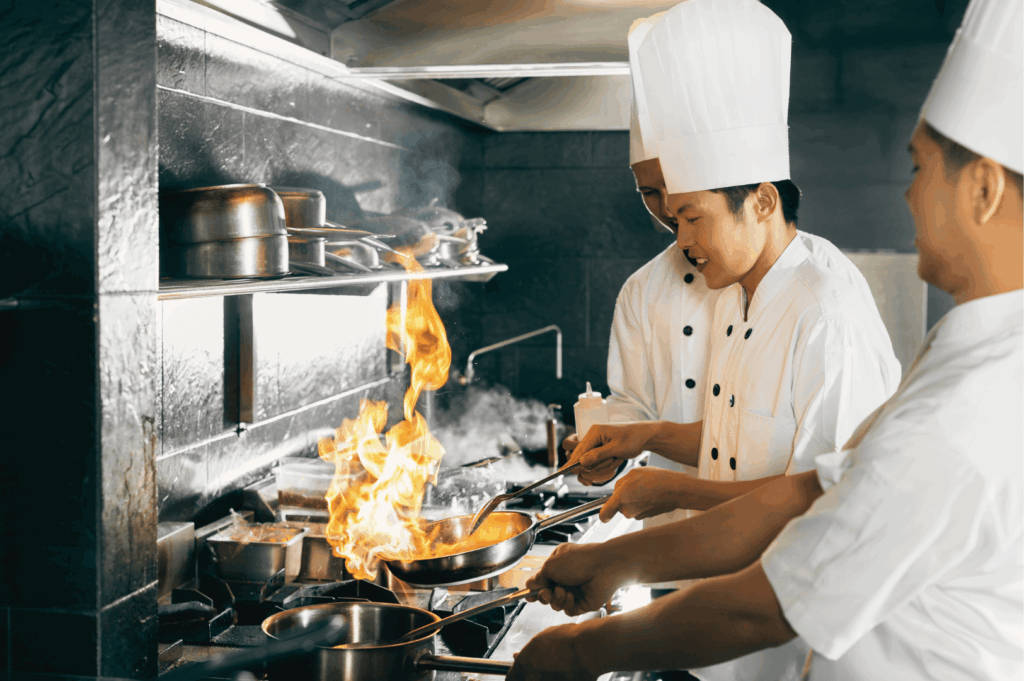
Developing a reliable and efficient commercial kitchen ventilation Singapore strategy demands more than just meeting code—it requires a holistic, forward-thinking approach tailored to your business’s unique climate and operational needs.
Key Actionable Takeaways:
- Assess Specific Needs: Conduct a thorough evaluation of your kitchen space, cooking process, and humidity affect before selecting your system and equipment.
- Prioritize Energy Efficiency: Choose demand controlled ventilation, energy saving components, and humidity control strategies that reduce both cooling costs and environmental impact over time.
- Ensure Proper Ventilation: Work with engineers and designers knowledgeable in Singapore’s climate and regulatory context for an effective system that stands up to daily operation and monsoon seasons.
- Commit to Regular Maintenance: Establish a cleaning and service schedule that supports indoor air quality, safety, and equipment longevity—particularly vital for high humidity environments.
- Plan for the Future: Incorporate modern technologies such as IoT monitoring, energy efficient fans, and advanced dehumidifiers for ongoing performance and adaptability.
Invest wisely in your commercial kitchen ventilation by the Singapore system—it’s the backbone of your kitchen’s success, the support for your team, and a central driver of customer satisfaction and business longevity.
